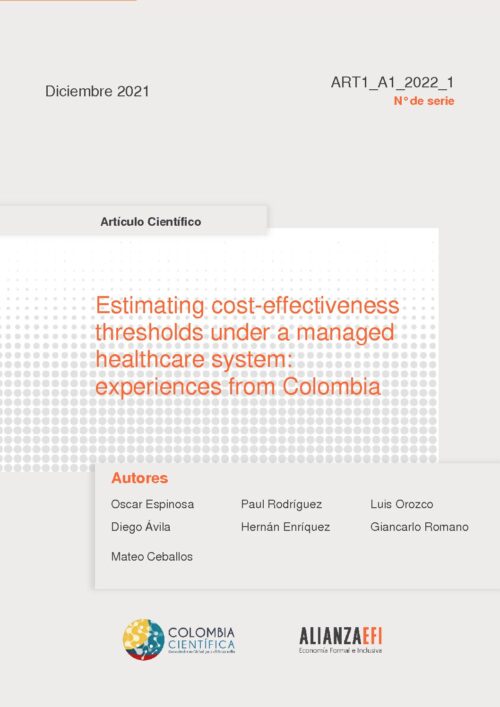Like most of the world, low- and middle-income countries have faced a growing demand for new health technologies and higher budget constraints. It is necessary to have technical instruments to make decisions based on real-world evidence that allows maximization of the population’s health with a limited budget. We estimated the supply-based cost-effectiveness elasticity, which was then used to determine the cost-effectiveness threshold for the healthcare system of Colombia, a middle-income country where multiple insurers, paid under capitation rules, manage the compulsory contributions of the citizens and government subsidies. Using administrative data, we explored the variation of health expenditures and outcomes at the insurer, geographical region, diagnosis group and year levels. To deal with endogeneity in a two-way fixed-effects model, we instrumented health expenditures using characteristics of the health system such as drug-price regulation. We estimated the threshold to be US$4487.5 per years of life lost avoided [14.7 million Colombian pesos (COP) at 2019 prices] and US$5180.8 per quality-adjusted life- years gained (17 million COP at 2019 prices), around one times the gross domestic product GDP per capita. To the best of our knowledge, this is the first estimation of the cost-effectiveness threshold elasticity supply-based in a middle-income country with a managed healthcare system.
Autores:
- Diego Ávila
- Giancarlo Romano
- Hernán Enríquez
- Luis Orozco
- Mateo Ceballos
- Oscar Espinosa
- Paul Rodríguez
Palabras clave:
- Colombia
- Cost-effectiveness
- healthcare spending
- QALY
- threshold
Categorías:
- Proyecto 1
- Publicación
